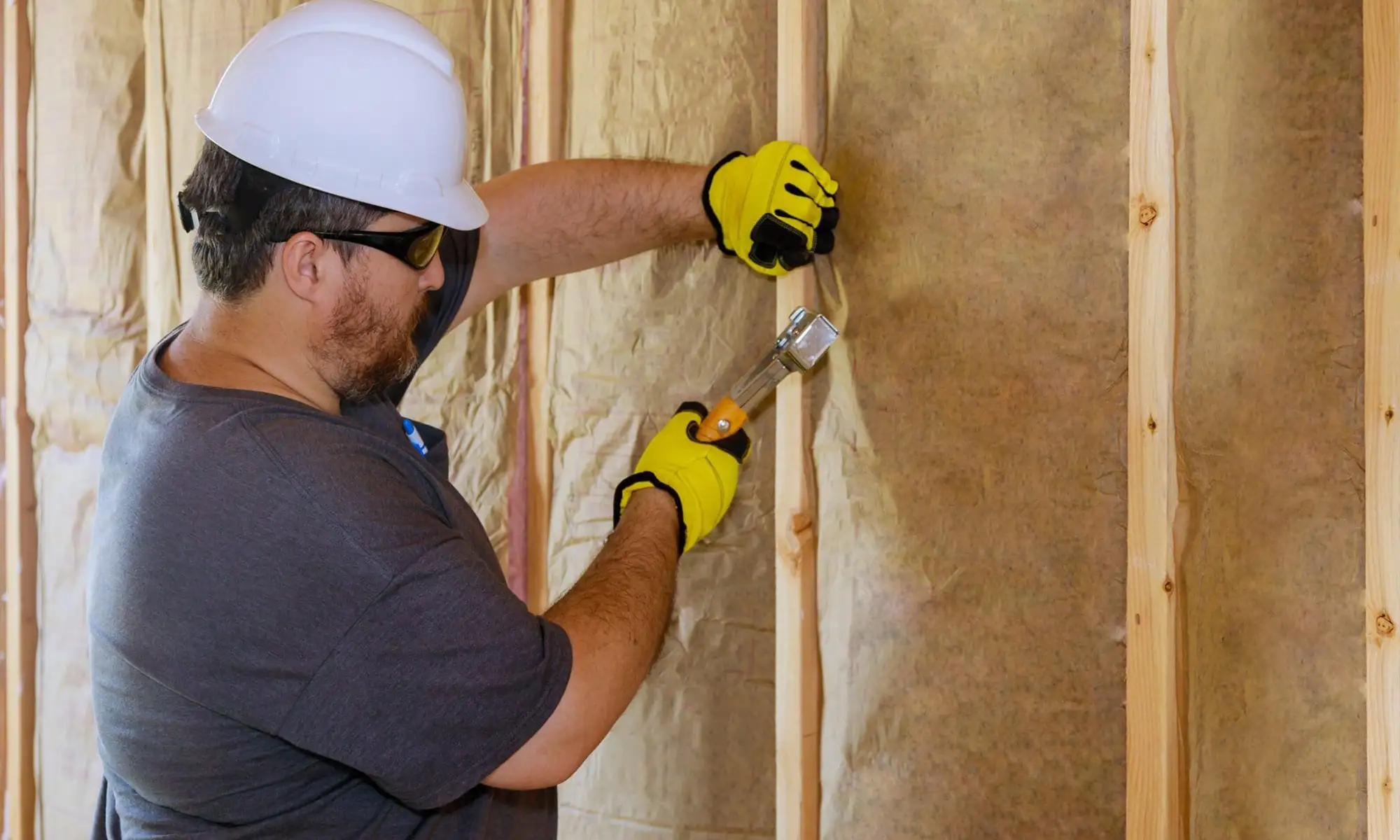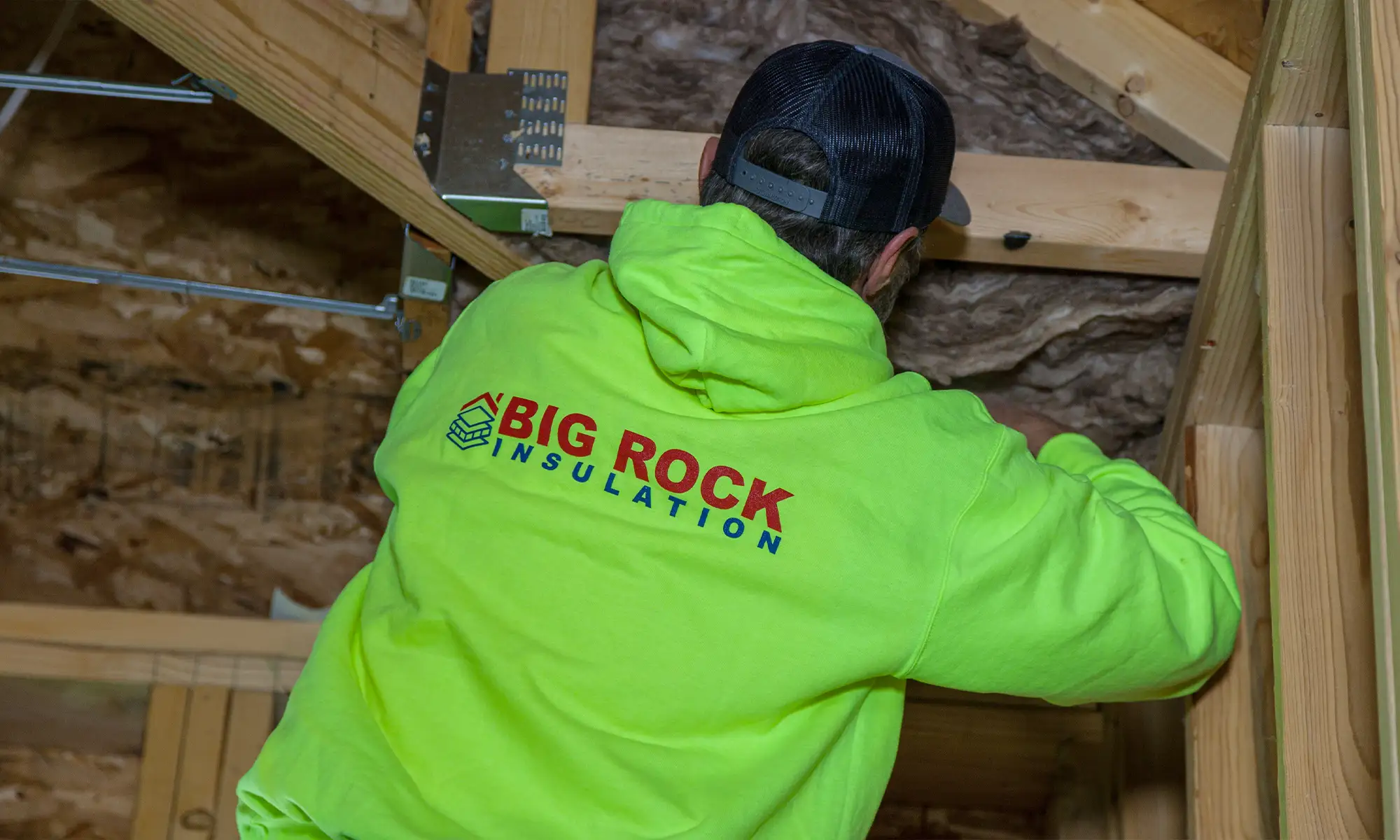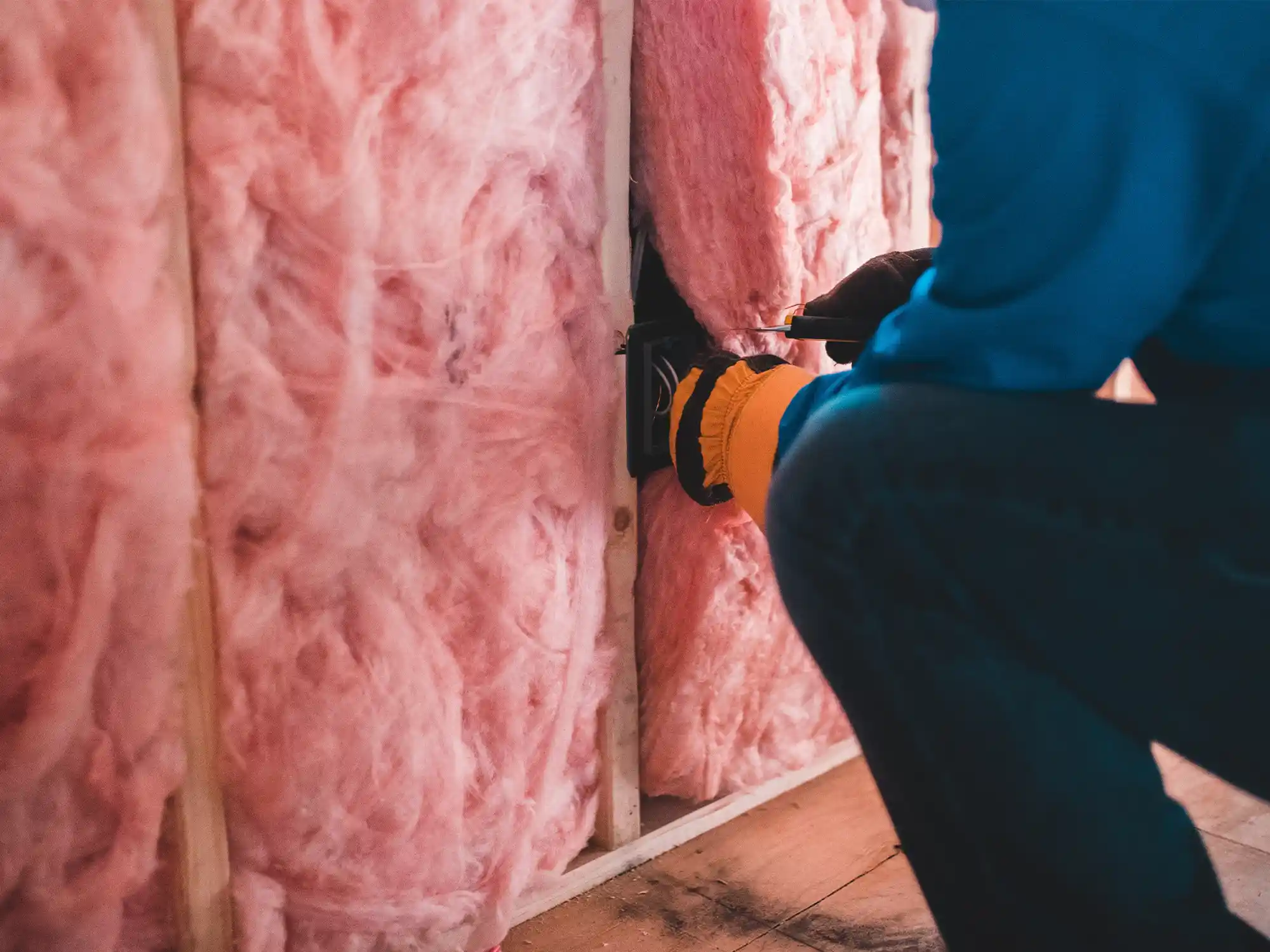Learn all about Fiberglass Batt Insulation
Fiberglass BATT Insulation can come in pink, yellow, white or green depending on the manufacturer and has a spongy feel with a cotton candy look. It typically comes in a blanket form, called batts, with standard pre-cut lengths and widths.

What is Fiberglass Batt Insulation?
Fiberglass Batt Insulation is made of extremely fine glass fibers that comes in batts, loose-fill and even rigid boards. Fiberglass insulation is made in a process where spun-glass fibers are made into batts by using heat to stream melt into spun fibers through a rotating flywheel or drawn through tiny holes in rotating spinners. Fiberglass insulation creates thousands of small, porous spaces of air pockets to provide enough heat flow resistance for proper insulation. The insulation slows the spread of heat, cold and sound in the structures it is installed in. Manufacturers typically deliver medium to high density fiberglass insulation with different R-values. Fiberglass insulation is not waterproof but does provide some degree of moisture resistance. Fiberglass insulation can typically last the lifetime of the house itself.
How To Install & Remove Fiberglass Batt Insulation
Fiberglass Batt Insulation is relatively easy to install. The first step is to remove the drywall in the area, if there is any. The next step is to measure out/make sure the precut measurements of the insulation fit in the area you are working on and is tight on all four sides. Having a tight fit on the ceiling, floor and adjacent studs is important to ensure proper insulation.
When installing insulation, it is typically done after all electrical work is completed meaning it is necessary to cut out the areas around electrical boxes, wiring or other obstacles. The fiberglass is often stapled into place with the paper or foil backing facing the direction of warmth (outside typically). And remember! Pack your insulation as tight as possible in the area to ensure proper insulation.
When/if it is decided to remove/replace the fiberglass insulation in a building there are a few steps to take. First, make sure those working have personal protective equipment, especially respirators to help prevent fiberglass particles entering the lungs. Once protection is in place, find the proper tools (typically a screw drive and a hammer) to remove the staples holding the insulation batts in place.
Once the staples are out the next step is to roll the insulation down into itself and then place the completed rolls into garbage bags to prevent particle spread. Lastly, there is sure to be loose fiberglass insulation so it is best to pick the remaining material up or use an industrial vacuum to get it all. Take all wasted materials to the landfill or a recycling center since most fiberglass insulation has some sort of recyclable material in it.

Where To Use BATT Insulation?
Fiberglass batt insulation can be placed in unfinished walls, floors, ceilings, attics, crawl spaces, and rim joists. Generally, fiberglass insulation is placed between studs, joists and beams during construction of the building. It can also be used as duct insulation for tank style water heaters. Due to the material not being waterproof you cannot use it in foundations or areas with significant exposure to moisture.
Fiberglass Insulation Pros & Cons
Fiberglass Insulation is a good, tried and true insulation option for many homes and businesses. However, it does come with is own benefits and problems that should be considered beforehand.
Pros
- Relatively inexpensive
- Suited for standard stud & joist spacing free from obstruction
- Can be used for DIY projects
Cons
- Small fiberglass particles can lodge on the skin and cause rash, irritation, etc.
- If improperly installed, it will allow airflow and poor insulation
- Inhaled particles can cause coughing, nosebleeds and respiratory issues.
- If disturbed, it releases particles in to the air.
- Can trap allergens, dust and moisture leading to mold







